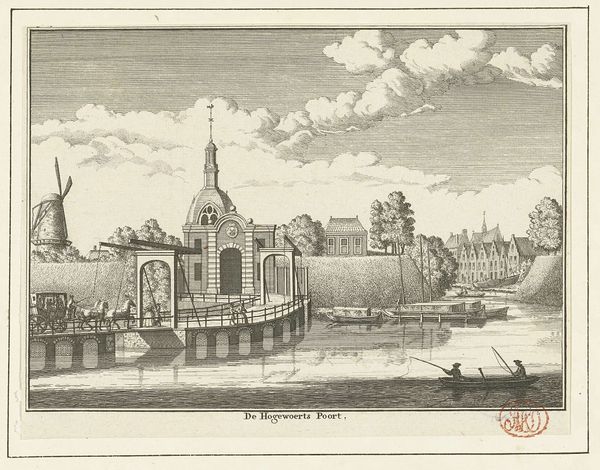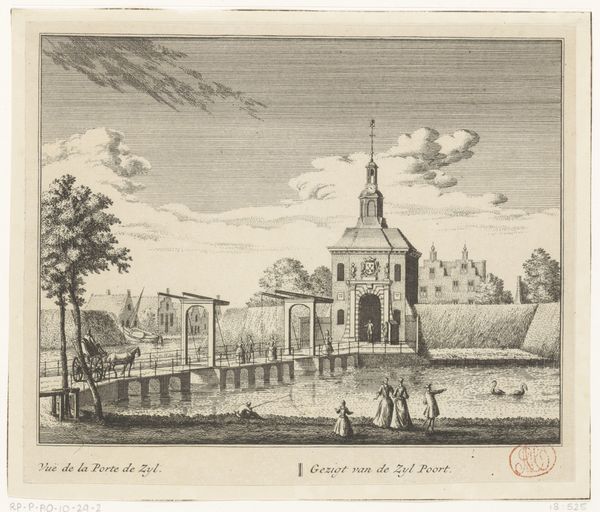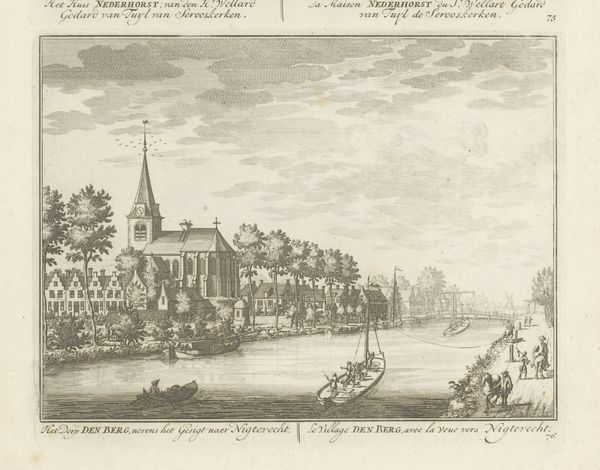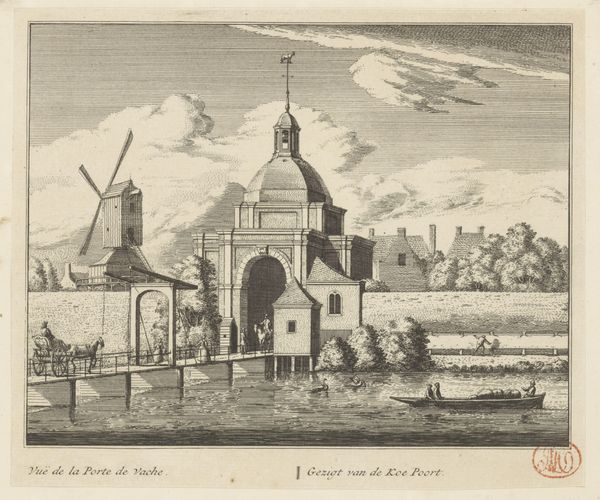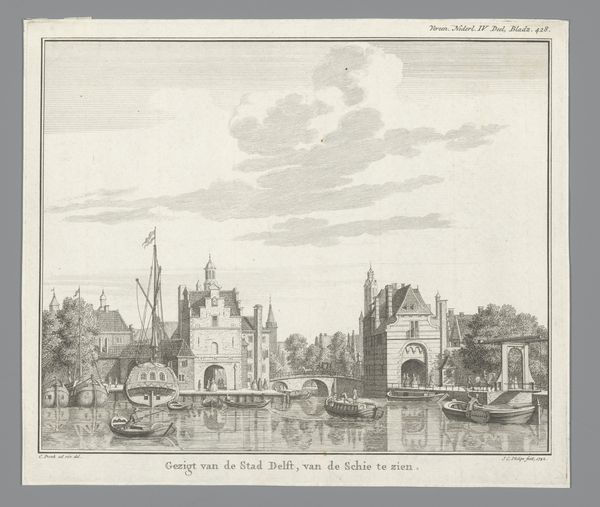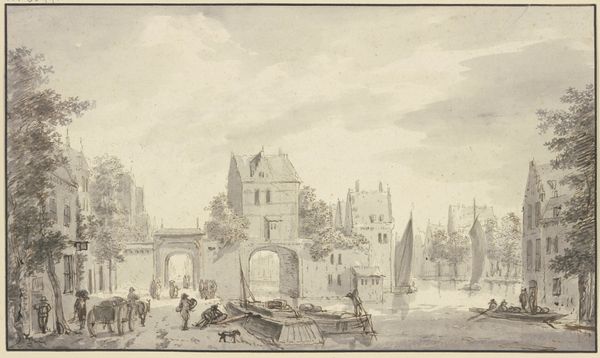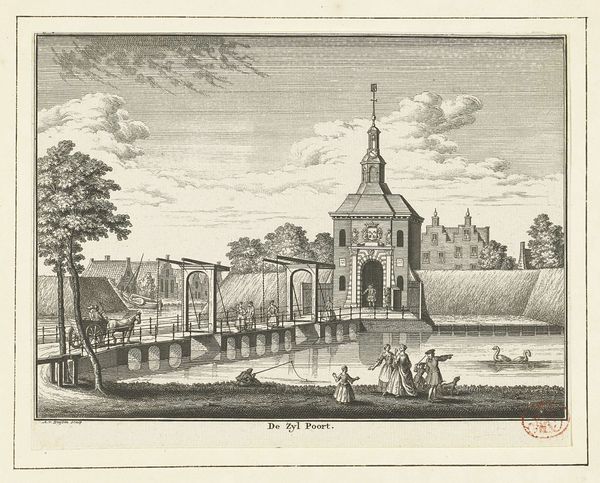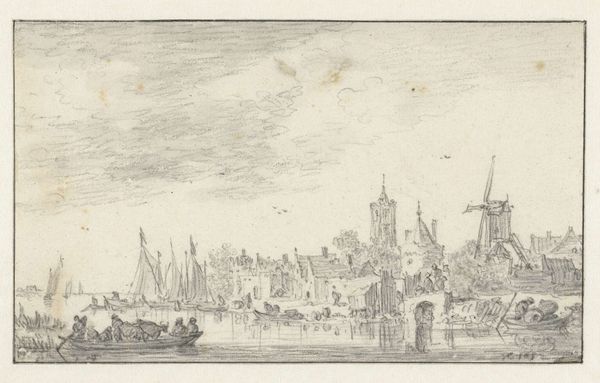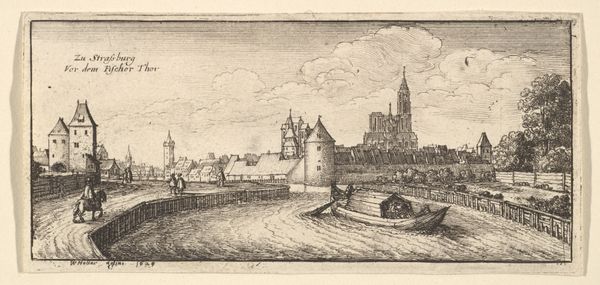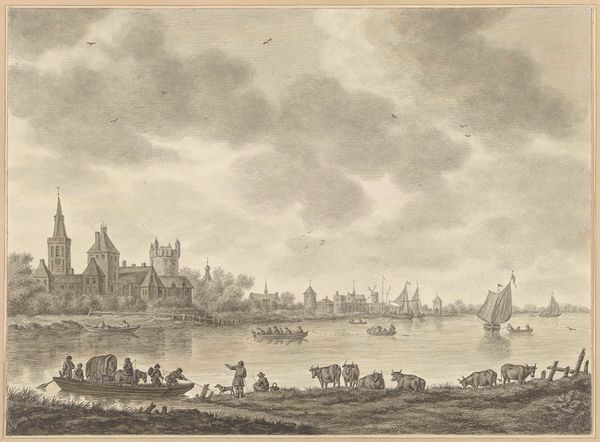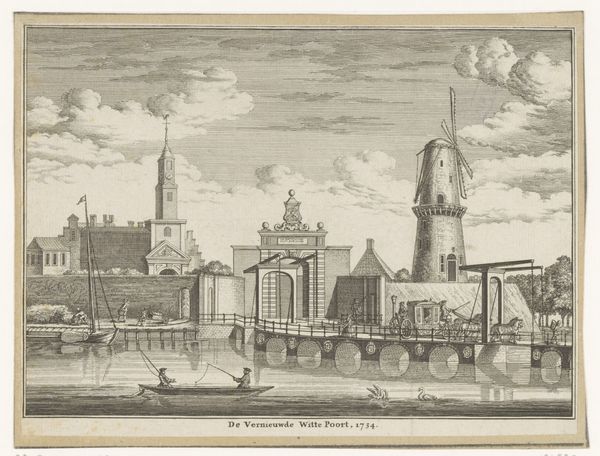
engraving
#
dutch-golden-age
#
landscape
#
cityscape
#
engraving
#
realism
Dimensions: height 165 mm, width 199 mm
Copyright: Rijks Museum: Open Domain
Curator: "Gezicht op de Hogewoerdsbuitenpoort te Leiden," made after 1732 by Abraham Rademaker. It’s an engraving, and its intricate detail makes it fascinating to examine. I wonder, what's your first impression? Editor: It has a peaceful quality. It also shows the windmill, which represents industrial manufacturing. How do you interpret this work? Curator: I'm particularly interested in the engraving itself, and the labour required to create the matrix. Here, we see a landscape treated almost like a commodity. How was the countryside being marketed to those within the city? Also, I wonder who would have been able to afford to purchase engravings of this type? Were they being marketed to an emerging merchant class? Editor: That’s a really good point about the merchant class! So, instead of just appreciating it as art, you’re thinking about how it fits into the economic system of the time? Curator: Precisely! Consider the paper: where was it produced? Who made it, and under what conditions? Rademaker wasn't simply representing a landscape. He was participating in a complex web of material production and consumption, connecting rural resources with urban markets. How does thinking about the labor involved change how you see the image? Editor: It makes me think about the lives of the people not pictured, those producing the raw materials, like the paper you mentioned, the miners perhaps? I hadn't considered it as more than a landscape artwork. Now I will. Curator: And it all ties back into what these images were made *for* and *by* whom. An exploration of labour really helps unpack some underlying economic themes that I’d missed!
Comments
No comments
Be the first to comment and join the conversation on the ultimate creative platform.
